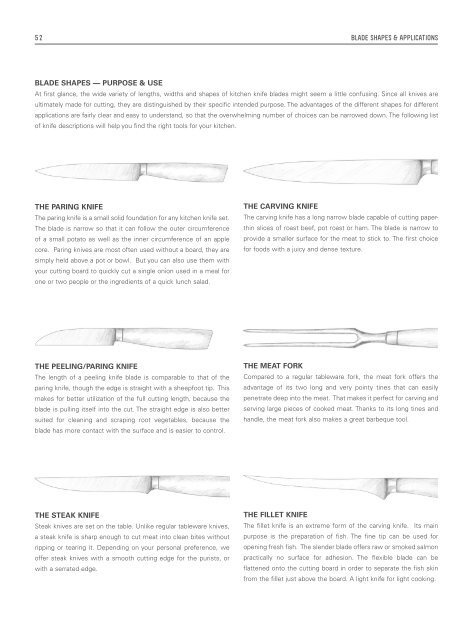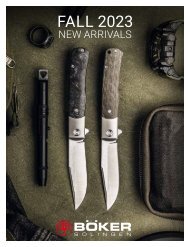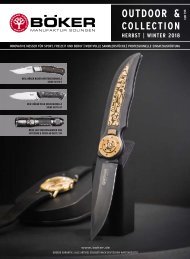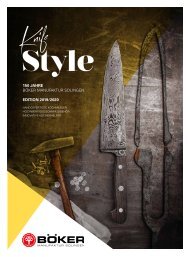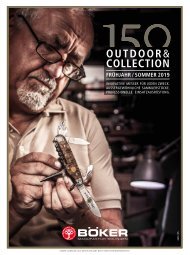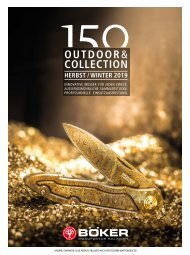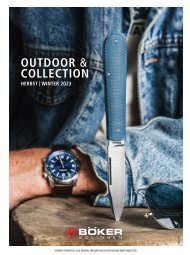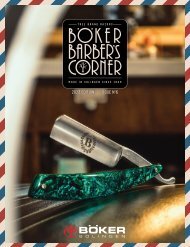Boker Knifestyle | EN Edition 2018 / 2019
You also want an ePaper? Increase the reach of your titles
YUMPU automatically turns print PDFs into web optimized ePapers that Google loves.
52 BLADE SHAPES & APPLICATIONS<br />
BLADE SHAPES — PURPOSE & USE<br />
At first glance, the wide variety of lengths, widths and shapes of kitchen knife blades might seem a little confusing. Since all knives are<br />
ultimately made for cutting, they are distinguished by their specific intended purpose. The advantages of the different shapes for different<br />
applications are fairly clear and easy to understand, so that the overwhelming number of choices can be narrowed down. The following list<br />
of knife descriptions will help you find the right tools for your kitchen.<br />
THE PARING KNIFE<br />
The paring knife is a small solid foundation for any kitchen knife set.<br />
The blade is narrow so that it can follow the outer circumference<br />
of a small potato as well as the inner circumference of an apple<br />
core. Paring knives are most often used without a board, they are<br />
simply held above a pot or bowl. But you can also use them with<br />
your cutting board to quickly cut a single onion used in a meal for<br />
one or two people or the ingredients of a quick lunch salad.<br />
THE CARVING KNIFE<br />
The carving knife has a long narrow blade capable of cutting paperthin<br />
slices of roast beef, pot roast or ham. The blade is narrow to<br />
provide a smaller surface for the meat to stick to. The first choice<br />
for foods with a juicy and dense texture.<br />
THE PEELING/PARING KNIFE<br />
The length of a peeling knife blade is comparable to that of the<br />
paring knife, though the edge is straight with a sheepfoot tip. This<br />
makes for better utilization of the full cutting length, because the<br />
blade is pulling itself into the cut. The straight edge is also better<br />
suited for cleaning and scraping root vegetables, because the<br />
blade has more contact with the surface and is easier to control.<br />
THE MEAT FORK<br />
Compared to a regular tableware fork, the meat fork offers the<br />
advantage of its two long and very pointy tines that can easily<br />
penetrate deep into the meat. That makes it perfect for carving and<br />
serving large pieces of cooked meat. Thanks to its long tines and<br />
handle, the meat fork also makes a great barbeque tool.<br />
THE STEAK KNIFE<br />
Steak knives are set on the table. Unlike regular tableware knives,<br />
a steak knife is sharp enough to cut meat into clean bites without<br />
ripping or tearing it. Depending on your personal preference, we<br />
offer steak knives with a smooth cutting edge for the purists, or<br />
with a serrated edge.<br />
THE FILLET KNIFE<br />
The fillet knife is an extreme form of the carving knife. Its main<br />
purpose is the preparation of fish. The fine tip can be used for<br />
opening fresh fish. The slender blade offers raw or smoked salmon<br />
practically no surface for adhesion. The flexible blade can be<br />
flattened onto the cutting board in order to separate the fish skin<br />
from the fillet just above the board. A light knife for light cooking.


